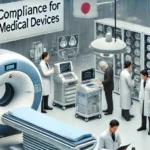

Top 7 Trends Shaping the Refurbished Medical Equipment Market in 2025
The global refurbished medical equipment market has been experiencing significant growth, driven by factors such as cost-effectiveness, technological advancements, and sustainability concerns. As healthcare providers seek to optimize operational efficiency without compromising on quality, the demand for refurbished medical devices has surged. In 2025, several key trends are shaping this evolving landscape. Here are the top seven trends influencing the refurbished medical equipment market.
1. Rising Adoption of Circular Economy Principles
Sustainability has become a key priority for the healthcare industry. The adoption of circular economy principles—where medical equipment is refurbished, reused, and recycled—has gained traction. Healthcare facilities are increasingly investing in refurbished equipment to reduce electronic waste and lower their carbon footprint. Manufacturers and suppliers are also integrating environmentally friendly refurbishment processes, making sustainability a core component of their business models.
2. Technological Advancements in Refurbishment Processes
The refurbishment of medical equipment is no longer limited to simple repairs and recalibration. Advanced technologies such as artificial intelligence (AI), machine learning, and automation are enhancing the efficiency and precision of refurbishment. These technologies help in diagnosing defects, optimizing repair workflows, and ensuring that refurbished equipment meets or exceeds OEM (Original Equipment Manufacturer) standards. AI-powered predictive maintenance is also improving the longevity of refurbished devices, boosting their appeal in the market.
3. Stringent Regulatory Compliance and Standardization
As the demand for refurbished medical devices grows, regulatory bodies worldwide are tightening their oversight. Compliance with regulations such as the FDA’s Good Manufacturing Practice (GMP) standards, the European Medical Device Regulation (MDR), and ISO 13485 has become a necessity. Companies that adhere to these stringent quality standards are gaining a competitive edge, as healthcare institutions prioritize equipment that meets high safety and performance benchmarks.
4. Growing Popularity of Third-Party Refurbishers
In addition to OEM-certified refurbishment programs, third-party refurbishers are gaining market share. Independent refurbishers offering high-quality, cost-effective solutions are becoming trusted partners for hospitals and clinics looking to expand their medical equipment portfolio. These third-party providers are investing in innovative repair techniques and quality assurance protocols to enhance credibility and trust within the industry.
5. Increased Demand in Emerging Markets
Developing economies are witnessing a surge in demand for affordable healthcare solutions, making refurbished medical equipment a viable option. Countries in Latin America, Africa, and Asia-Pacific are actively adopting refurbished devices to bridge the gap between healthcare needs and budget constraints. Government initiatives promoting cost-effective medical solutions and improved healthcare infrastructure are further driving the demand for refurbished equipment in these regions.
6. Integration of IoT and Smart Technology in Refurbished Equipment
The Internet of Things (IoT) is revolutionizing medical equipment, and this trend is extending to refurbished devices as well. IoT-enabled refurbished equipment allows remote monitoring, predictive maintenance, and real-time diagnostics. These smart technologies enhance operational efficiency, minimize downtime, and improve patient outcomes. The ability to integrate modern connectivity solutions into refurbished equipment is making them more attractive to healthcare providers looking for cost-effective yet advanced medical technology.
7. Expansion of Leasing and Subscription-Based Models
Leasing and subscription-based models are becoming increasingly popular in the refurbished medical equipment sector. Healthcare providers, especially smaller clinics and outpatient centers, prefer leasing refurbished devices to avoid large capital expenditures. Subscription-based models allow healthcare institutions to access high-quality medical equipment with maintenance and support services included, providing flexibility and cost savings.
Conclusion
The refurbished medical equipment market is undergoing a transformative phase, driven by sustainability initiatives, technological advancements, regulatory frameworks, and evolving business models. As healthcare providers look for ways to reduce costs while maintaining high-quality patient care, the demand for refurbished medical devices will continue to rise. Companies that prioritize innovation, compliance, and customer trust will be well-positioned to thrive in this dynamic market in 2025 and beyond.
Add a comment Cancel reply
Related posts


Regulatory Compliance for Refurbished Medical Devices

New vs. Refurbished Medical Devices: Making the Decision

Refurbished Surgical Instruments from Japan: Precision, Quality, and Value
Japan Address
COMFYS JAPAN LLC, R Cube Aoyama 3rd Floor, 1-3-1 Kita-Aoyama, Minato-ku, Tokyo 107-0061,Japan
Africa Address
Comfys International Limited KP Offices, Suite 26 Milimani, Nairobi, KENYA




